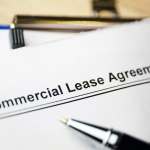Different Types of Commercial Real Estate Leases
Commercial leases generally have a bit more variety than apartment leases and fall into three main categories: net, gross and modified gross.
- A net lease usually carries the lowest base rent, but the tenant is responsible for paying for any additional expenses, like utilities.
- A gross lease is when the tenant pays one lump sum, which includes all additional expenses.
- A modified gross lease falls between a net and gross lease. This can vary widely based on what is and isn’t included per the negotiations between the tenant and landlord.
Gross/Full-Service Leases
Also called full-service leases, gross leases roll all expenses into one single payment for the tenant, which covers expenses such as taxes, insurance and maintenance. For tenants that value predictability in their expenses, a full-service lease is ideal because it tends to be the same every month for the entire lease term.
Example: The tenant’s base rent is $4,000. The landlord estimates the operating expenses for the tenant to be $500 per month, but might also add $100 per month in case the estimates are off. The tenant’s monthly lease would then be $4,600 per month.
Net Leases
In a net lease, the base rent is lower and some or all of the expenses associated with operations, maintenance and use are paid by the tenant. These can include taxes, property insurance, and common area maintenance items (CAMS), like janitorial services, property management fees, utilities, and any other commonly shared area or service.
Single Net Lease (N Lease)
The tenant pays base rent plus their share of the building’s property tax. The landlord covers all other building expenses.
Example: Tenant leases 5% of the building and pays a base rent of $4,000 per month. Property taxes for the entire building are $10,000 per year. In this case, the monthly rent would be: $4,000 base rent + $41.67 share of property taxes ($10,000/12 months x 5%) = $4,041.67 monthly net lease rent.
Double Net Lease (NN Lease)
The tenant pays base rent plus their share of the building’s property taxes and insurance. The landlord covers all other building expenses.
Example: Annual insurance premium for the entire building is $3,000. The monthly rent would be: $4,000 base rent + $41.67 share of property taxes + $12.50 share of insurance premium ($3,000/12 months x 5%) = $4,054.17 monthly double net lease rent.
Triple Net Lease (NNN Lease)
The tenant pays all three nets on a typical lease — taxes, insurance and CAMs — in addition to base rent. This is, by far, the most common type of commercial lease for office and retail spaces.
Example: Building maintenance costs are $20,000 per year. The monthly rent would be: $4,000 base rent + $41.67 property tax + $12.50 insurance + $83.33 share of CAM ($20,000/12 months x 5%) = $4,137.50 monthly triple net lease rent.
Modified Gross Lease
Modified gross leases can be a combination of all of the previous lease types. Similar to a full-service lease, the tenant pays one lump sum — but what it includes as far as nets are concerned is negotiable.
Everything is Negotiable
Commercial leases can always be negotiated, so consider these main types of commercial lease agreements as starting points. It’s okay to negotiate terms and conditions for each lease to create your own, customized agreement that’s a win-win for both you and the landlord.









